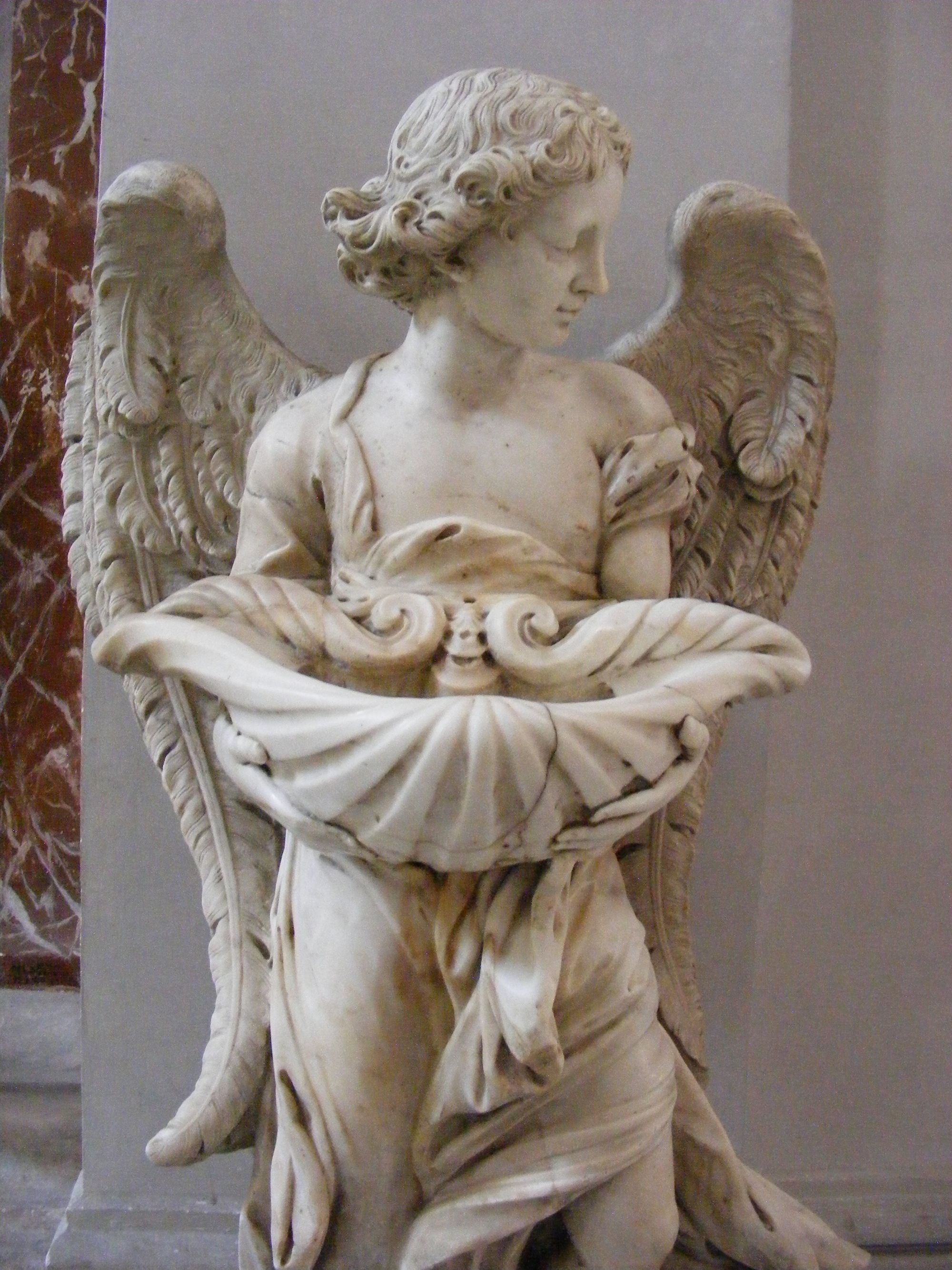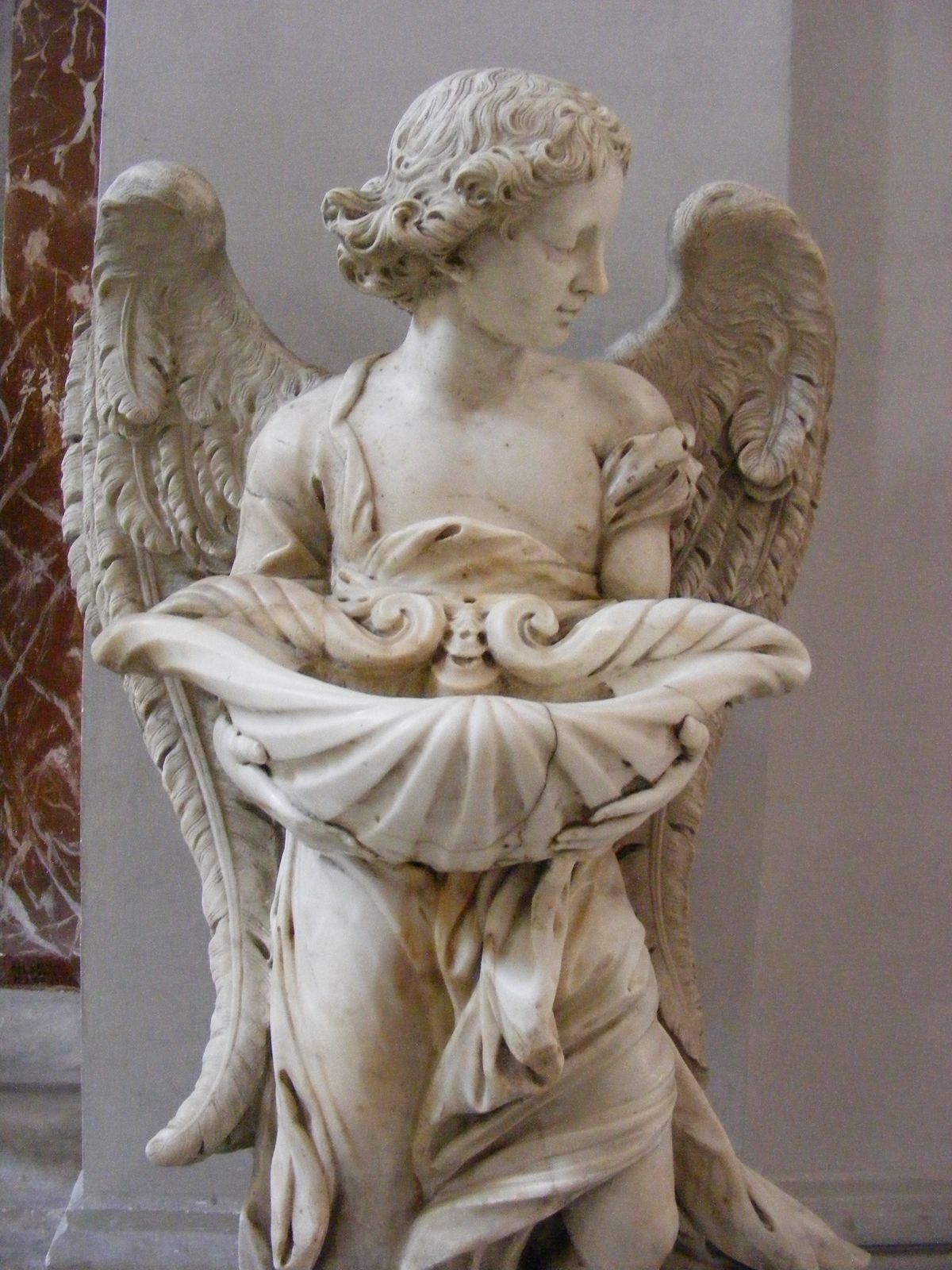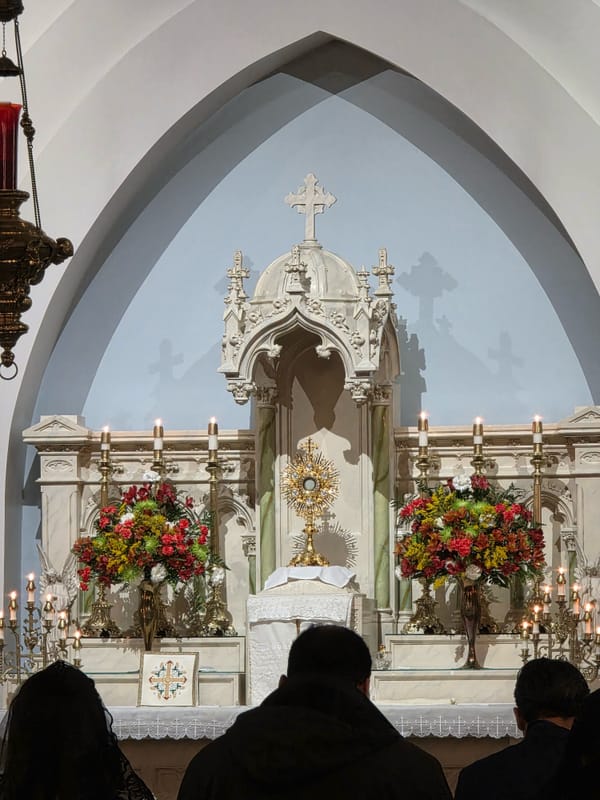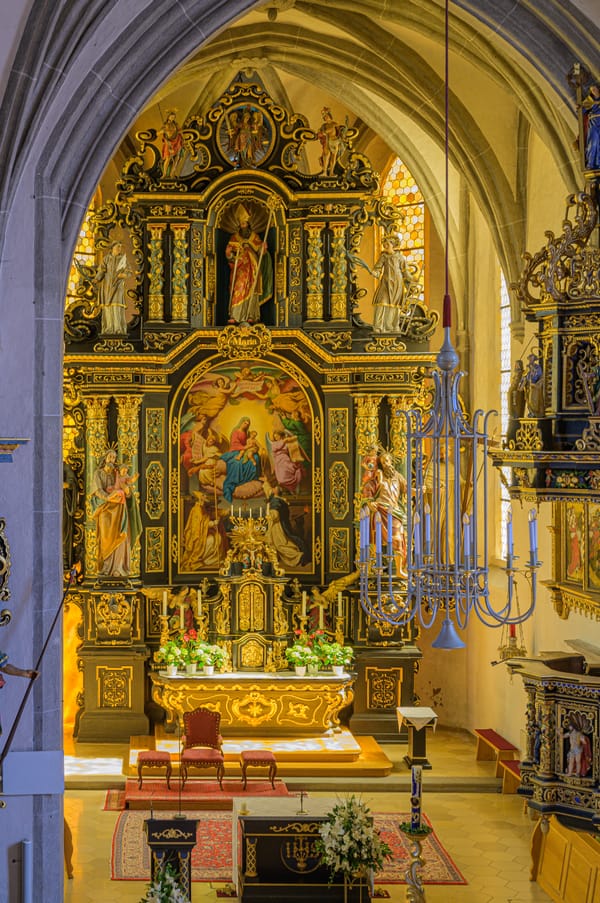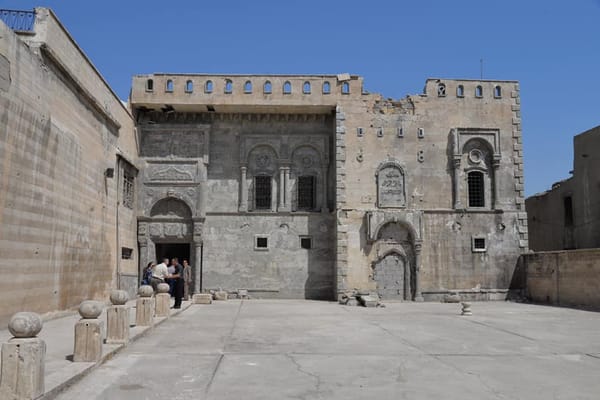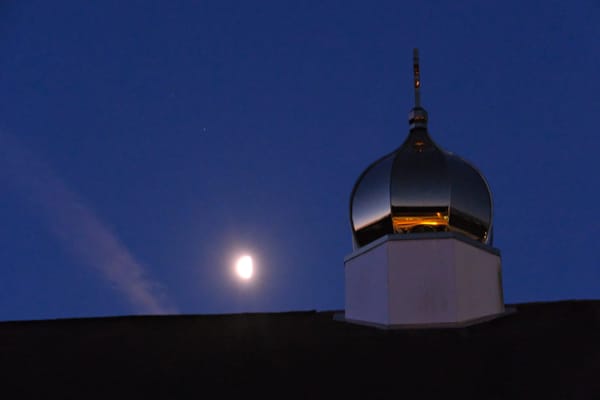By blessing water, Catholic priests praise God and ask him for his grace. Intended as a reminder of baptism, Catholic Christians dip their fingers in the holy water and make the sign of the cross when entering the church.
Fr. John F. Sullivan, writing in the early twentieth century, noted that, "Besides the pouring of baptismal water ... the sprinkling with holy water is a part of the ceremonies of Matrimony, of Extreme Unction and of the administration of the Holy Eucharist to the sick, and it is employed also in services for the dead."
The Sunday liturgy may begin with the Rite of Blessing and Sprinkling Holy Water, in which holy water is sprinkled upon the congregation; this is called "aspersion", from the Latin, aspergere, "to sprinkle". This ceremony dates back to the 9th century. An "aspergill" or aspergillum is a brush or branch used to sprinkle the water. An aspersorium is the vessel which holds the holy water and into which the aspergillum is dipped, though elaborate Ottonian examples are known as situlae. Blessed salt may be added to the water where it is customary to do so.
This use of holy water and making a sign of the cross when entering a church reflects a renewal of baptism, a cleansing of venial sin, as well as providing protection against evil.
The image below is in the public domain.
Free Downloads Below
Hi-Res
1200px
800px
